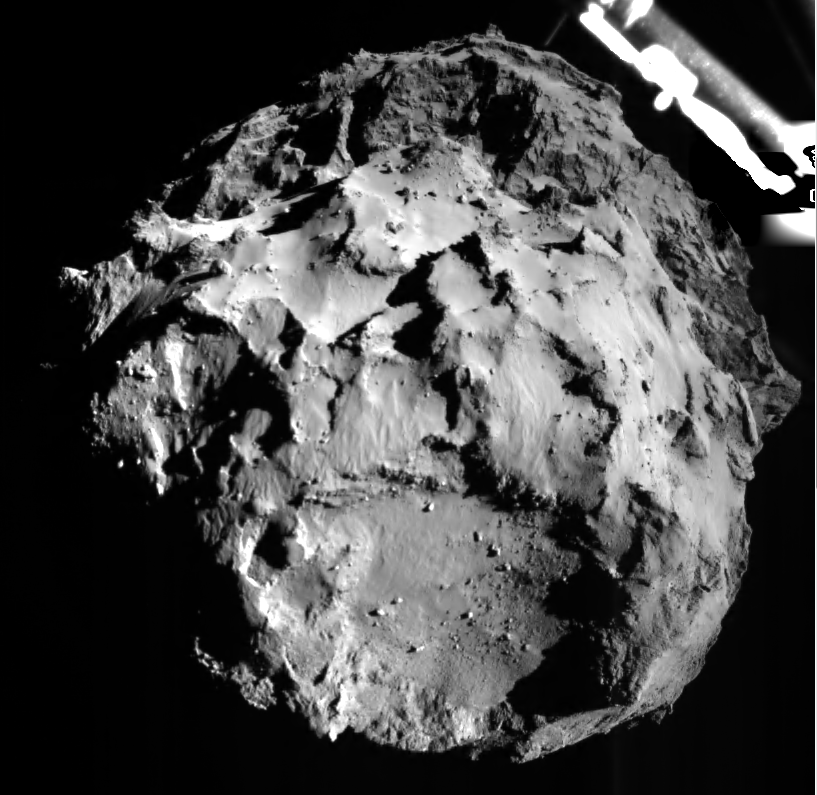
Story updated
For the first time in human history, a manmade object has touched down on the surface of a comet!
Marking a truly astounding moment, the Philae lander, built by the European Space Agency (ESA), soft landed on comet 67P/Churyumov–Gerasimenko today, Nov. 12, while traveling some 500 million kilometers (300 million miles) from Earth at over 41,000 mph on a mission of cutting edge science to elucidate our origins.
Confirmation of Philae’s momentous soft landing at the Agilkia landing site came at about 16:03 GMT/17:03 CET/11:03 a.m. EST, during a live broadcast from ESA mission control at the European Space Operations Center (ESOC) in Darmstadt, Germany.
“Philae is in great shape,” announced Rosetta Flight Director Andrea Accomazzo.
“We definitely confirm the lander is on the surface and is talking to us,” he said soon after landing.
Jubilation broke out in mission control when the confirmatory signals were received back on Earth after traveling at the speed of light, about 28 minutes after the history-making landing actually took place.
“We saw the touchdown signal,” said Stephan Ulamec, Philae Lander Manager at the DLR German Aerospace Center.
“It had a soft touchdown. Philae is on the surface.”
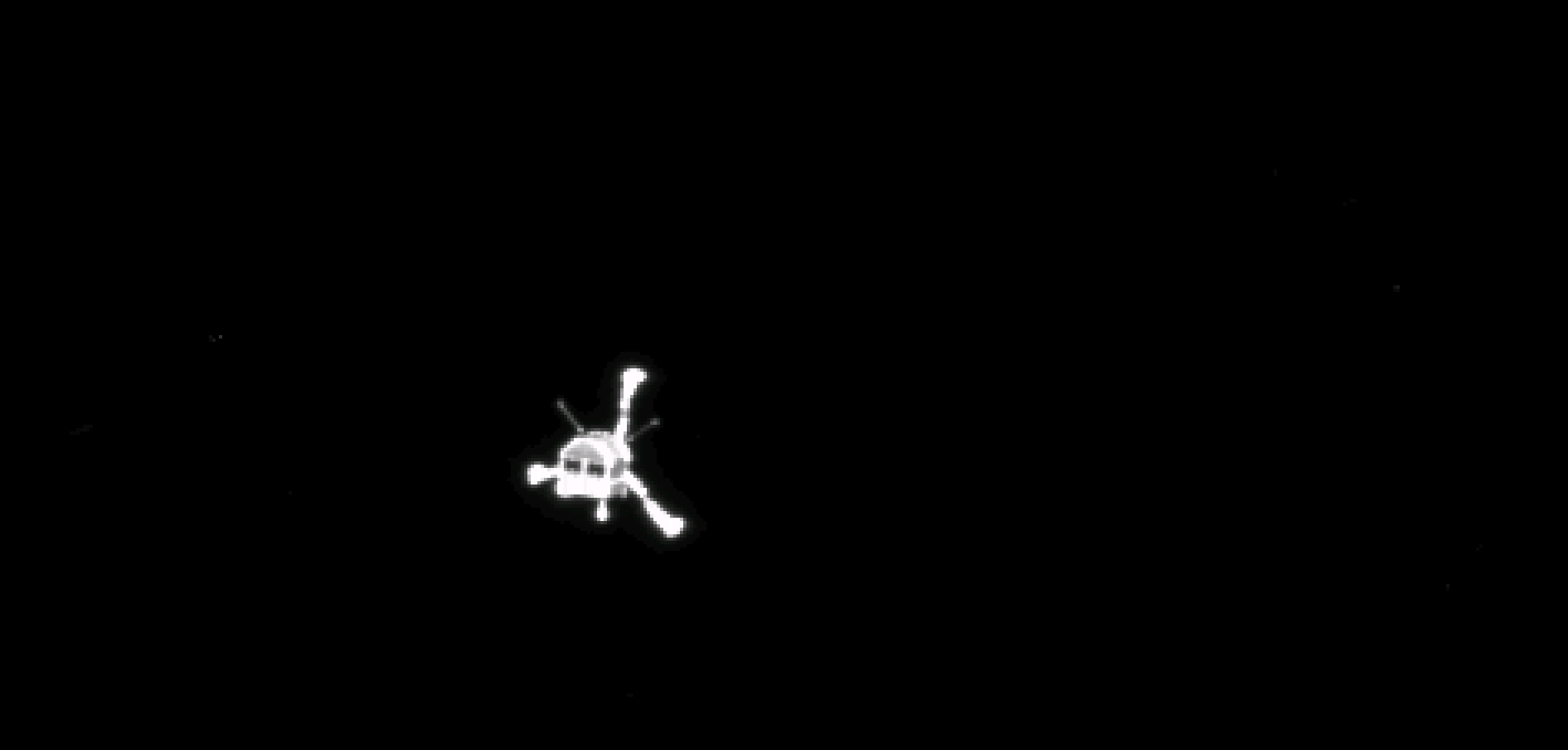
And as if the tension wasn’t already thick enough, Philae had to land on the “head” of the bizarre, two-lobed comet while it was rotating. Comet 67P measures only 4 kilometers wide (2.5 miles).
Agilkia was selected as the primary landing site only about six weeks ago, after Rosetta and Philae arrived in early August. The landing site is only about 500 meters across.
The signal confirmation was transmitted via ESA’s accompanying Rosetta orbiter to ESOC. The first data from Philae was transmitted to the lander’s Science, Operations and Navigation Centre at France’s CNES space agency in Toulouse.
However, the exact status of Philae was still being determined several hours later.
It’s not known if the lander is securely bound to the comet’s surface, since its set of two harpoons apparently did not fire as planned and as was initially thought.
Indeed it may have lifted off, turned, and touched down again.
“Maybe today we didn’t just land once … we even landed twice!” said Ulamec. “We still don’t fully understand what happened.”
“It’s not so easy to interpret. But tomorrow morning, we should know a lot more.”
But Philae has transmitted some data gathered by several science instruments from the comet’s surface, before Rosetta went below the horizon and lost contact as planned.
“ESA is the first to have done this to land on a comet,” said Jean-Jacques Dordain, ESA’s Director General, during the broadcast.
“Our ambitious Rosetta mission has secured a place in the history books: not only is it the first to rendezvous with and orbit a comet, but it is now also the first to deliver a lander to a comet’s surface.”
“This will stand forever. This is a big step for human civilization.”
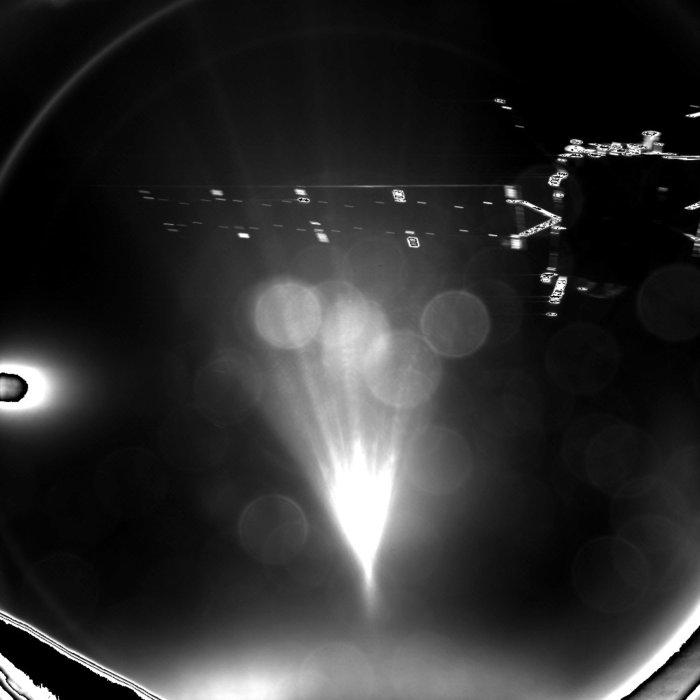
Comet 67P is an extremely odd, two-lobed celestial body stemming from the origin of our Solar System.
Comets could hold clues to the origin of life on Earth since they brought significant quantities of water and organic molecules to the early Earth as it was evolving.
“We are rendezvousing with our origins,” noted Dordain exuberantly.
Earlier this morning, Nov .12, Europe’s Rosetta orbiter dropped off the tiny attached Philae landing craft for an uncontrolled seven-hour-long descent to the surface of comet 67P, which very surprisingly looks like a rubber ducky.
Philae was released from the Rosetta mother ship into the loneliness of space at 09:03 GMT/10:03 CET/4:03 a.m. EST.
Shortly thereafter, Rosetta’s high-resolution OSIRIS science camera snapped a series of amazing and eerie snapshots of the departing Philae showing all three landing legs and the antenna successfully deployed. Rosetta’s OSIRIS imaging system includes both a wide-angle camera and narrow-angle camera.
Philae also snapped a mesmerizing farewell parting shot of Rosetta with the lander’s CIVA-P imaging system that shows one of Rosetta’s 14-meter-long solar arrays and glare from the Sun.
“We took an image shortly after release,” said Jean-Pierre Bibring, a lead lander scientist and principal investigator of the CIVA instrument at the IAS in Orsay, France, during the broadcast.
“It proves the camera works!”
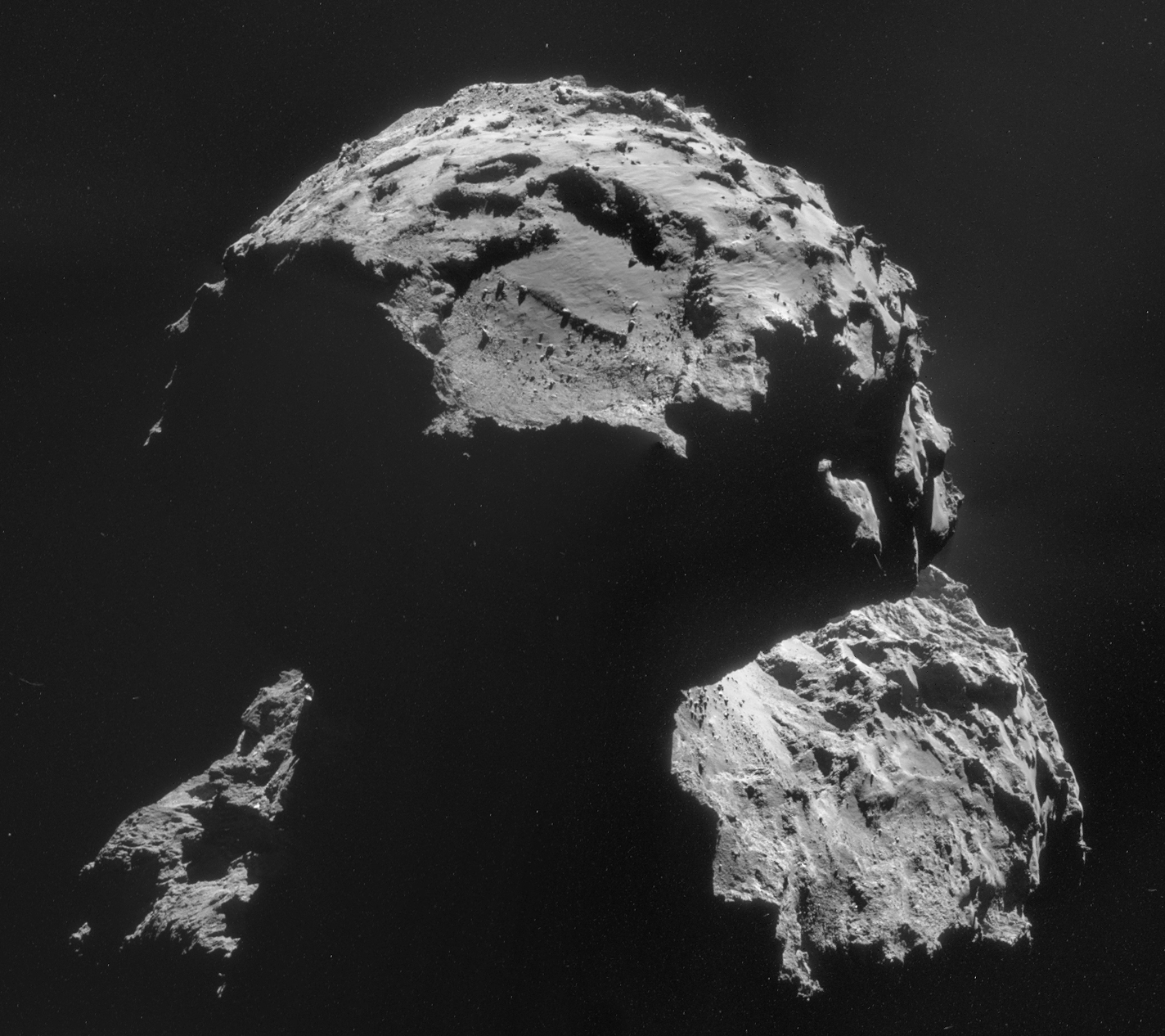
ESA designed and built the Rosetta/Philae mission along with significant participation from NASA in the form of a trio of science instruments.
Before releasing Philae, the team had to make a series of five critical go/no-go decisions over the past day and this morning to confirm that both spacecraft were ready and operational, and that Rosetta had accomplished the final thruster maneuver to achieve the desired orbit orientation for lander dropoff.
Almost at the last minute, a problem was detected with the lander. An issue was found with the small thruster on top that is designed to counteract the recoil of the lander’s pair of harpoons to push the lander down onto the surface.
The team elected to proceed ahead anyway. It’s not known at this time if the landing thruster fired or not.
If they had aborted today’s landing attempt, the next opportunity would not have come until about two weeks later, at the earliest.
The separation took place as planned at 09:03 GMT (10:03 CET) at a distance of 22.5 kilometers from the center of the comet.
Philae is about the size of a washing machine. The 100-kg lander is equipped with 10 science instruments including cameras, spectrometers, chemical analyzers, and a drill.
About two hours after separation, Rosetta established contact with Philae to confirm the vehicle health and act as a relay to Earth for all the telemetry and science data.
During the descent, Philae’s ROLIS (ROsetta Lander Imaging System) camera acquired an image of the Agilkia landing site from a distance of approximately 3 kilometers from the surface.
“The image shows the landing site is right in the middle,” said the principal investigator. “We had a safe landing.”
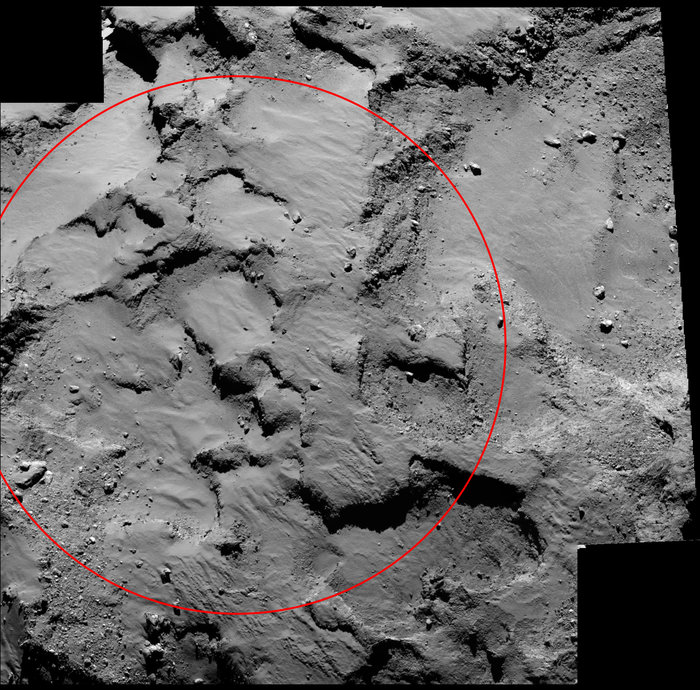
Today’s events are the culmination of a 10-year-long trek through space of over 6.4 billion kilometers (4 billion miles) from launch on March 4, 2004, to rendezvous with the comet on August 6, 2014.
Before that came another decade to plan, design, and build Rosetta and Philae.
“After more than 10 years travelling through space, we’re now making the best ever scientific analysis of one of the oldest remnants of our Solar System,” said Alvaro Giménez, ESA’s Director of Science and Robotic Exploration.
“Decades of preparation have paved the way for today’s success, ensuring that Rosetta continues to be a game-changer in cometary science and space exploration.”
NASA, as a mission partner, also announced the agency’s congratulations.
“How audacious! How exciting! How unbelievable! -is this achievement. We should relish this moment,” said Jim Green, Director of NASA’s Planetary Science Division,Washington, D.C, during the broadcast.
“The solar system is within mankind’s grasp. These steps will lead us to Mars. A single planet species won’t survive.”
“We congratulate ESA on their successful landing on a comet today,” said John Grunsfeld, astronaut and associate administrator for NASA’s Science Mission Directorate in Washington, D.C., in a statement.
“This achievement represents a breakthrough moment in the exploration of our solar system and a milestone for international cooperation. We are proud to be a part of this historic day and look forward to receiving valuable data from the three NASA instruments on board Rosetta that will map the comet’s nucleus and examine it for signs of water.
“The data collected by Rosetta will provide the scientific community, and the world, with a treasure-trove of data. Small bodies in our solar system like comets and asteroids help us understand how the solar system formed and provide opportunities to advance exploration. We look forward to building on Rosetta’s success exploring our solar system through our studies of near earth asteroids and NASA’s upcoming asteroid sample return mission OSIRIS-REx. It’s a great day for space exploration.”
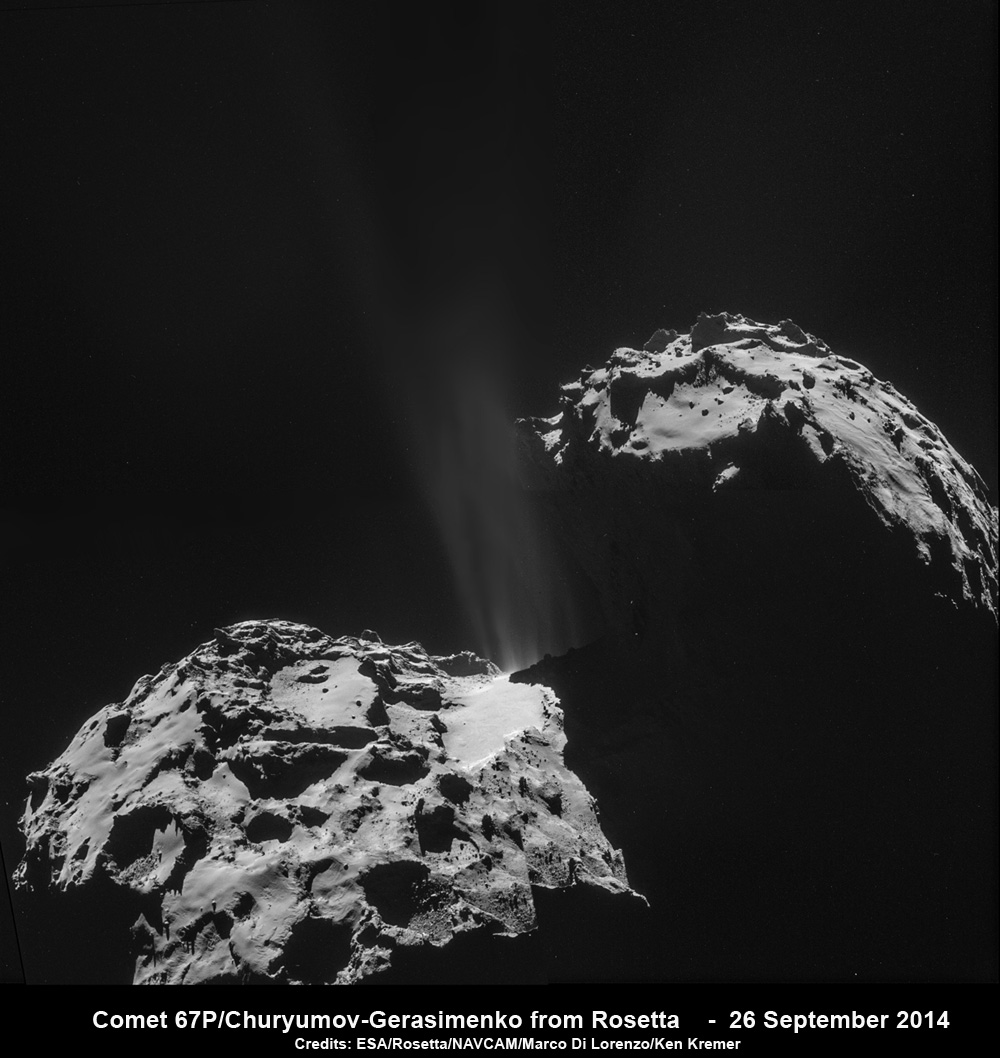
The exact status of Philae is still being determined and won’t be known for sure until tomorrow, when contact is reestablished with the Rosetta orbiter.
The three-legged lander was to fire two harpoons and use ice screws to anchor itself to comet’s surface. Philae was programmed to collect stereo and panoramic images.
The spacecraft can also drill 20 to 30 centimeters into the comet to sample below its surface and deliver the pristine material to an on-board chemistry lab where it will to be heated for detailed analysis of organics and other materials.
Philae is both battery and solar powered. It has enough battery power to survive 2.5 days. Thereafter, it requires solar power to continue operating.
“With Rosetta we are opening a door to the origin of planet Earth and fostering a better understanding of our future. ESA and its Rosetta mission partners have achieved something extraordinary today,” noted Dordain.
Stay tuned here for continuing developments.
Want to keep up-to-date with all things space? Be sure to “Like” AmericaSpace on Facebook and follow us on Twitter: @AmericaSpace
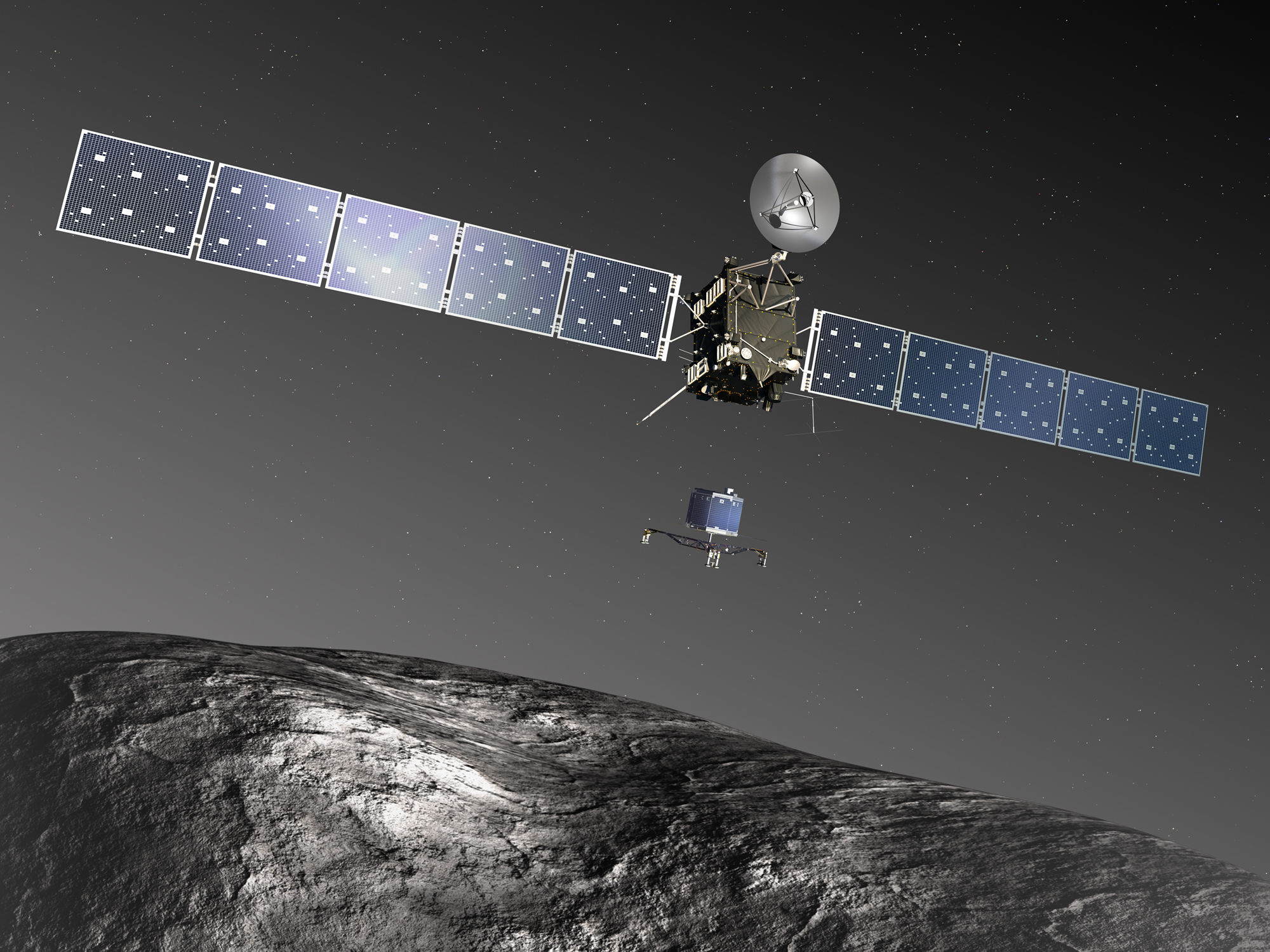




I am contacting you from Dublin Ireland thank you for all this wonderful information, very informative
Rock on, Philae! The ESA is really picking up speed with its achievements.
This is an astounding feat and a testament to human ingenuity. Mankind’s reach has yet again been extended and the science gleaned will provide a deeper understanding of our cosmic back yard. Let’s hope for some amazing surface photos!
And the pictures today are incredible!
From Mariner 4 on, what humanity’s eyes have seen – wow!